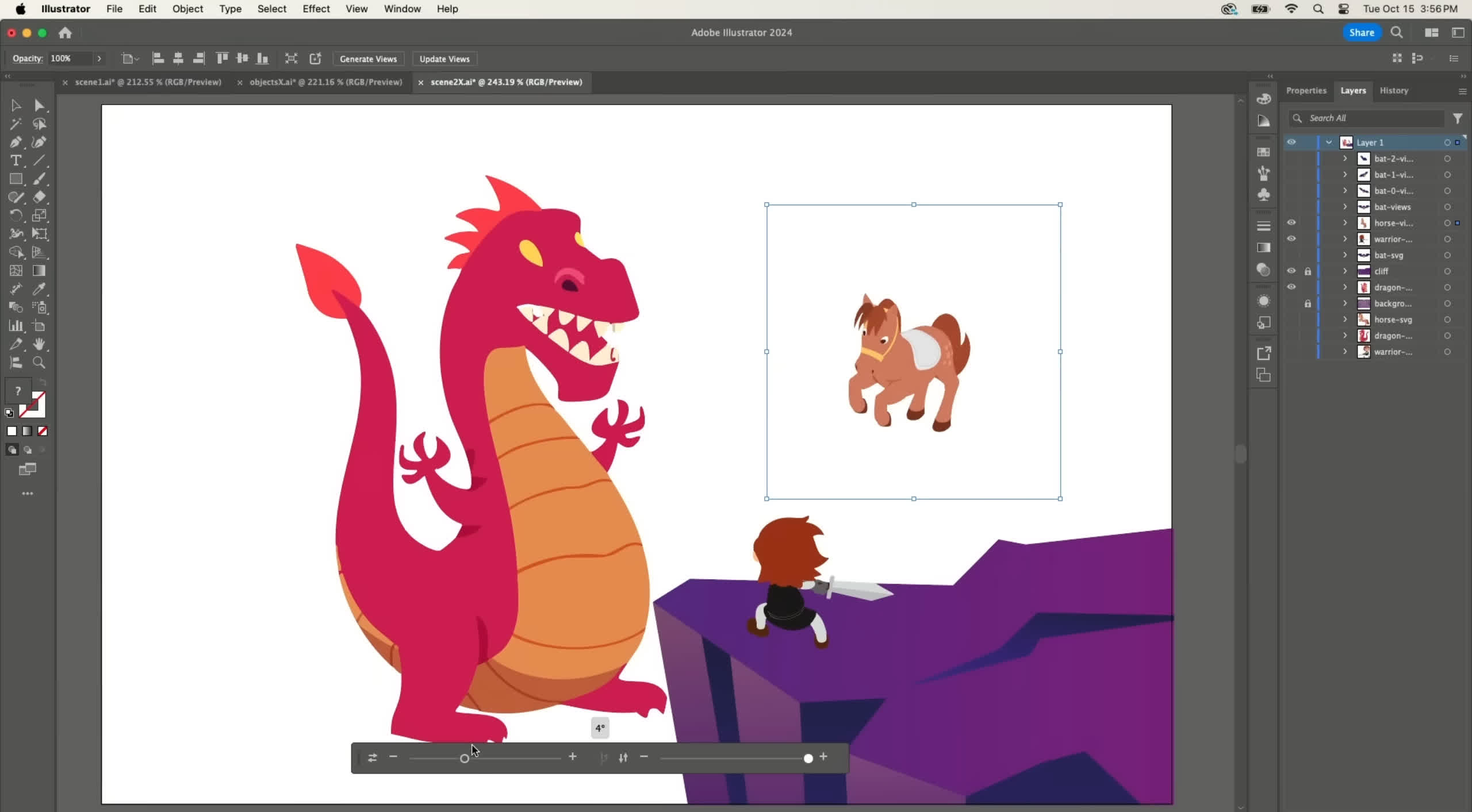What simply occurred? Adobe’s annual MAX creativity convention is often full of revolutionary concepts, and this 12 months was no exception. A spotlight was Challenge Turntable, an experimental instrument that enables customers to seamlessly rotate 2D vector artwork inside a 3D house whereas sustaining the aesthetics of the unique.
Rotating a 2D illustration or graphic to a special angle often requires redrawing your entire picture from scratch, which is usually a time-consuming course of even for expert artists. Adobe’s new instrument upends this through the use of superior AI algorithms to reshape the vector artwork because it spins by three-dimensional house and intelligently fill in any gaps.
One of many demos confirmed a easy illustration of a dragon being rotated to face a warrior from a special perspective. Because the picture twists and turns, it takes on a 3D high quality, nearly showing to be a bodily object. But when it settles into its new orientation, the ensuing graphic is unmistakably flat and two-dimensional.
Maybe much more spectacular is Challenge Turntable’s capability to generate new components primarily based on the prevailing vector knowledge. In the identical dragon scene, a horse illustration with solely two seen legs was rotated, revealing the AI had deduced and rendered the opposite two legs that have been beforehand hidden.
Past this, Adobe additionally unveiled Challenge Scenic, an experimental instrument designed to streamline 2D picture creation. Usually, picture turbines do not allow you to customise every element – a bigger a part of the scene is left to the AI to plan out. However Challenge Scenic adjustments that, giving customers granular management by letting them generate particular person objects in a 3D scene structure. They will then regulate the digicam positioning and have the AI generate a last 2D picture primarily based on the composed scene.
One other notable instrument was Challenge Remix A Lot, which might take tough bodily sketches and digitize them into editable vector artwork utilizing generative AI. The instrument may mechanically generate structure variations tailor-made for various side ratios and social media codecs, even “irregular” ones.
It is vital to notice that these “Sneaks,” as Adobe dubs them, are experimental tasks designed to point out off its cutting-edge analysis. There isn’t any assure if or when any of those instruments might be built-in into the corporate’s industrial software program, although there is a good likelihood of that occuring contemplating how helpful they seem.




![From UMG’s [PIAS] buyout to Harmony’s $217m Daddy Yankee deal… it’s MBW’s Weekly Spherical-Up](https://7newstv.com/wp-content/uploads/2024/10/1729267557_Screenshot-2021-06-25-at-12.55.41-75x75.jpg)
